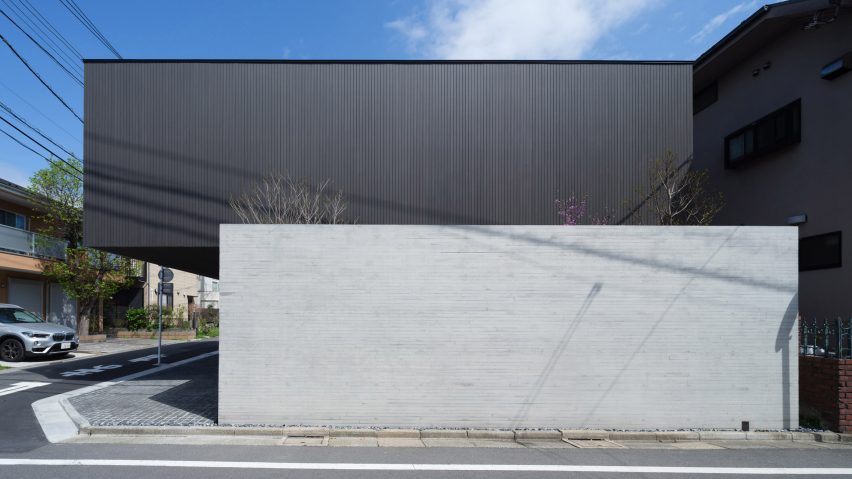Two cantilevered stacked volumes of contrasting materials form Laxus, a new home designed by Japanese studio Apollo Architects & Associates.
Located on a corner plot in the Ota Ward of Tokyo, the house was designed by Apollo Architects & Associates for a client with a love of walnut wood and contemporary Italian furniture.
The two stacked cubes that comprise the home were designed to "create a continuity between the interior and exterior while ensuring privacy and security," Apollo principal architect Satoshi Kurosaki told Dezeen.
"The exterior materials are different each floor, resulting in a highly abstract building."
The ground floor volumes built from board-formed, exposed concrete, while the upper floor was clad in contrasting black composite lumber.
The upper volume projects over the front of the lower volume, creating a covered entrance to the home and a carport area.
On entering the home, a hallway leads to the master bedroom and children's room. Both these rooms overlook an enclosed terrace with trees and shrubs.
"The building is enclosed by a high concrete wall imprinted with the Japanese cedar formwork used to make it, which blocks views of the interior from the street," Kurosaki explained.
Stairs lead up to the open plan living and kitchen area on the first floor, which has a vaulted ceiling clad in warm walnut wood.
A long skylight runs above the staircase to the north, with integrated louvres to temper the effects of the sun's rays on the internal space.
The living area opens out onto a second enclosed terrace. Large plate glass windows bring natural light from this outdoor space into the living and dining space.
The bathroom on this floor also overlooks the terrace. The bathtub is positioned in front of the window to give views into this green space when bathing.
Founded in 2000 by Kurosaki, Apollo Architects & Associates is based in Tokyo. The studio's previous projects include a home that blurs indoor and outdoor spaces and a residence that is arranged around a series of hidden courtyards.
The photography is by Masao Nishikawa.

